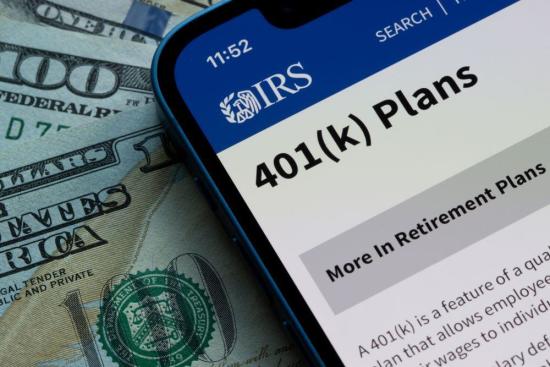The Secure Act 2.0 also known as the Securing a Strong Retirement Act was signed into law on December 29, 2022. The Secure Act 2.0 is a follow up to the Secure Act 1.0 passed in January of 2020. This new Secure Act 2.0 contains over 4,000 pages of new legislation with major changes affecting businesses and individuals. Here’s a first look at 4 key pieces of information that will benefit you right now:

- The New RMD age increases from 72 to 73 in 2024.
- A brand-new option for surviving spouses that affects today’s withdrawal strategies.
- Employer sponsored plan updates like student loan matching for 401(k)’s and penalty free emergency savings withdrawals.
- An update to the 10-year rule for those who Inherited an IRA in 2020 or later.
Huge Implications for Pre-Retirees
The Secure Act 2.0 legislation is going to have huge implications for retirement planning at all age and income levels, whether or not you’re an individual or business owner. This is truly some interesting and original legislation that’s core purpose is to help us save more for our own retirements. I think it recognizes and addresses some of the key hurdles we face when saving for retirement.
#1. New Required Minimum Distribution age is 73 in 2023
Let’s start by talking about the implications of raising the required minimum distribution ages.
The New RMD age increases from 72 to 73 this year and then it increases again in the year 2033 to age 75. Those of you turning 72 in 2023, good news, you are not required to start taking distributions until next year.
Pro-Tip #1:
When you first have to start taking minimum distributions from your IRA, the due date is April 1st of the year following the year you turn 73. The second and subsequent distributions are due by December 31st each year.
If you delay taking your first RMD until April 1st, you will be required to take your second RMD by December 31st of the same year, which is effectively taking two distributions in the same year. For that reason, most people choose to start taking their distributions in the year they are required to start.
Pro-Tip #2:
You don’t have to wait until December 31st, or even your birthday in the first year. Let’s say you turn 73 in November of 2024; you can take your distribution as early as January of the same year, 2024 in our example. And in fact, there’s a slight financial advantage to taking your withdrawals as early in the year as possible, especially if the funds remain invested.
For example:
If the deceased spouse is 65 and the surviving spouse is 75, the current law says the surviving spouse can combine the deceased spouses IRA together with their IRA and then it would be subject to required minimum distributions.
The new law would allow the surviving spouse to make a non-revokable election to retain those funds at the age of the younger spouse, meaning the required minimum distribution laws would apply based on the younger spouses “age” going forward.
My own opinion
This is really a huge benefit, and honestly it should have always been this way.
Financial Planning Implications
From now on, married couples will want to favor the younger of the two spouses when making contributions or withdrawals. Meaning, if you have to choose to contribute to 1 IRA this year, then you need to choose the younger of the two of you. And when the time comes for withdrawals, we’ll want to take out from the older of the two spouses.
Even if You’re Years from Retirement
This is something that every single married couple in the country can start acting on today, even before the law goes into effect. If you’re in the accumulation phase, we call you “Savvy Savers”, if you’re maxing out both spouses retirement savings that awesome, but if you can’t max both out, then you’ll prioritize by getting company matches first, and then choose the younger of the two of you second.

The same strategy in reverse if you’re on the withdrawal phase, now when you’re withdrawing money from IRA’s for living expenses, you’ll now want to prioritize the older of the two spouses.
#3. Employer sponsored plan updates:
- Student loan matching for 401(k)’s and
- Penalty free emergency savings withdrawals
The implications for the Secure Act 2.0 on businesses who offer retirements plans is absolutely huge with this legislation. Let’s discuss two very interesting new features.
Company match for Student Loan Payments
The first is that they are proposing that companies “match” what an employee pays in payments to their student loans. A lot of young savers are frustrated with paying high student loan payments and saying they can’t afford to contribute to a 401(k) plan.
The Secure Act 2.0 is going to allow companies to offer this as a benefit, that they can make a matching contribution to a 401(k) equal to, or a portion of, the amount the employee is paying towards their student loan.
I’m fascinated by how this will even be accomplished from a logistics standpoint, like how will the employer know how much the person is paying. Will the employer have to withhold and make the payments to keep track of the match? We don’t know yet.
Penalty Free Withdrawals – An Emergency Savings Option
The other really interesting feature they are proposing is to allow you to make up to 4 penalty free withdrawals annually from your company sponsored Roth plan for emergencies. The idea is to encourage higher savings into retirement plans and one smart way to do that is to allow you to make penalty free withdrawals.
This makes total sense, we want you to have an emergency savings account, or as I like to call it an Adventure Fund – and if you have an unexpected major expense, and all your money is tied up in employer sponsored plans you might have to use expensive alternatives like credit cards or early withdrawals subject to penalties. This will allow you limited access to some of your funds without penalty – super exciting.
I really love this idea
I see it so often, especially in younger households, where you’re trying to save and trying to put money away, but then something comes out of nowhere and you find yourself in a jam financially. I just love that it encourages savings and yet also accommodates the unexpected things that happen in life.
But Wait – Your Employer Must “Adopt” these provisions into their qualified plans
These will not happen automatically, there isn’t even a mechanism right now for facilitating either of these provisions. Once the rules are effective and in place, your employer will have to “adopt” them into their plan documents. This means you’ll have to find out from your employer if they offer these benefits within their plans.
#4. An update to the 10-year rule for Beneficiary IRA owners after 2020
One of the major changes that the first secure act made was to change the way “beneficiary” or “inherited” IRAs were treated. Prior to 2020, if you inherited an IRA you were able to stretch out the required minimum distributions over your lifetime. That all change with the Secure Act 1.0 that passed in January of 2020.
The new rule for beneficiariesNow you have a 10-year window to withdraw the entire account balance. And the interesting part of the rule is that it required ZERO withdrawals in years 1 -9. You just have to make all your withdrawals by the end of the 10th year.
Well – guess what – people aren’t making withdrawals the way congress had anticipated. Remember we talked about Biases a few months ago, and paying income taxes is one of our common biases. Now, with Secure Act 2.0, congress is saying that they might re-look at that and start requiring at least a minimum amount in years 1 -9.
Unclear – Common for New Legislation
And as of this moment, it’s not entirely clear, what the final answer is on this topic. The planning issue here is that if you inherited an IRA between now and January 1st of 2020, be prepared to have the rules changes again as far as taking distributions. There are a lot of really great planning strategies available around this topic, feel free to reach out to our office if you’d like to learn more.
Email: [email protected]
Wrapping Up
There will be a ton of information coming out over the next several months as we unpack this huge 4,000-page piece of legislation. I hope we’ve provided a few useful tips and pointers at this early stage in the game. Please reach out if you have any questions, my email is [email protected].
Thank you for reading! If you're interested in navigating your financial journey further; tune in, subscribe, and reach out!
Related Articles:
-
New Increases to IRA & 401(k) Contribution Limits in 2022 - Discover the latest changes to contribution limits for IRA and 401(k) accounts and how they can impact your retirement savings strategy.
-
Important Planning Strategies for IRA Beneficiaries - Learn essential strategies for managing and maximizing IRA benefits as a beneficiary.




